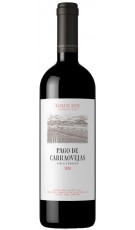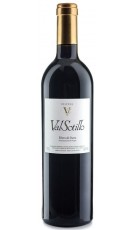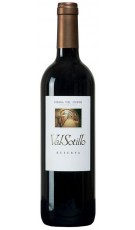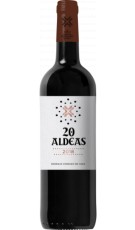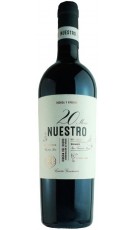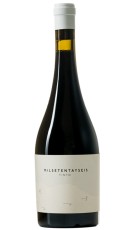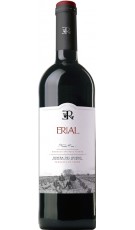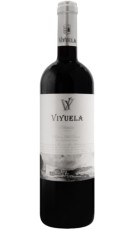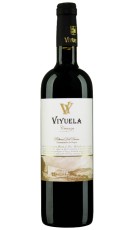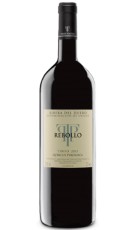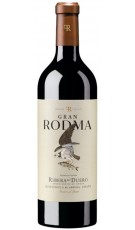
Castilla y León There are 1099 products.
El sector vitivinícola de Castilla y León está formado por 15.479 viticultores y más de 575 bodegas. Se trata de un sector relevante desde el punto de vista social y económico al alcanzar su valor económico, entre sector primario e industria de transforma...
Catalog
-
Pago de Carraovejas 2022
Red Wine CrianzaPAGO DE CARRAOVEJASRibera del DueroPago de Carraovejas is the highest expression of the valley; a wine full of nuances. From a prism of balance and a fresh character, the wine appears with volume and, at the same time, agile. Round...
In stock -
ValSotillo VS Reserva 2016
Red Wine.Bodegas Ismael ArroyoRibera del DueroRed wine made from 100% Tempranillo. Vineyards planted on south-facing slopes, on clayey-calcareous sands, and formed in the traditional system of goblet pruning.
Reduced price! -
ValSotillo Reserva 2018
Red Wine.Bodegas Ismael ArroyoRibera del DueroRed wine made from 100% Tempranillo. Vineyards planted on south-facing slopes, on clayey-calcareous sands, and formed in the traditional system of goblet pruning.
Reduced price! -
Condado de Haza 20 Aldeas 2021
Red Wine.FAMILIA FERNÁNDEZ RIVERARibera del DueroRed wine made by Condado de Haza, facing south at an altitude of more than 800 meters. 100% Tempranillo, a total vineyard of 200 hectares. Heterogeneous soils, mostly clay-loam with the presence of...
Reduced price!In stock -
Nuestro 20 meses 2015
Red Wine ReservaBODEGA DÍAZ BAYORibera del DueroRed Wine Reserva, 20 months in french oak barrels
Reduced price!In stock -
Milsetentayseis Tinto 2021
Red wine.PAGO DE CARRAOVEJASRibera del DueroMilsetentayseis Tinto is Fuentenebro: a unique environment in La Ribera del Duero with a setting of unique soils and altitude as the protagonists. It is a wine with tension and a very marked...
In stock -
Erial 2022
Red Wine CrianzaBODEGAS EPIFANIO RIVERARibera del DueroRed Wine Crianza, 12 months in french oak barrels
Reduced price!In stock -
Viyuela Selección 2020
Red Wine.BODEGAS VIYUELARibera del DueroRed wine made from 100% Tempranillo. Vineyard located in Boada de Roa, in the heart of the Ribera del Duero, vineyards with an average age of 30 years, harvested by hand.
Reduced price! -
Viyuela Crianza 2019
Red Wine.BODEGAS VIYUELARibera del DueroRed wine made from 100% Tempranillo. Vineyard located in Boada de Roa, in the heart of the Ribera del Duero, vineyards with an average age of 30 years, harvested by hand.
Reduced price! -
Viyuela Barrica 2021
Red Wine.BODEGAS VIYUELARibera del DueroRed wine made from 100% Tempranillo. Vineyard located in Boada de Roa, in the heart of the Ribera del Duero, vineyards with an average age of 30 years, harvested by hand.
Reduced price! -
Tomás Postigo Rebollo 2018
Red Wine.TOMÁS POSTIGORibera del DueroThe quality of a great wine is made up of a variety of varieties, from barrels to indigenous yeasts. Tinto Fino, Cabernet Sauvignon, Merlot and Malbec. Selected vineyards located between 750 and...
Reduced price!In stock -
Gran Rodma 2021
Red Wine.FINCA RODMARibera del DueroThe wine comes from a special vineyard due to its age, orientation and soil, which offers unique organoleptic sensations together with careful aging in new barrels. The eagle chose that the trout...
Reduced price!
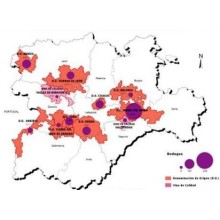
El sector vitivinícola de Castilla y León está formado por 15.479 viticultores y más de 575 bodegas. Se trata de un sector relevante desde el punto de vista social y económico al alcanzar su valor económico, entre sector primario e industria de transformación, los 738 millones de euros. La Consejería de Agricultura y Ganadería ha tenido para el sector vitivinícola entre sus prioridades fomentar la obtención de vinos de calidad que puedan lograr la máxima competitividad en el mercado y promover la internacionalización. En su apuesta por la calidad, el Gobierno autonómico ha gestionado de manera eficiente un régimen de ayudas europeas para la reestructuración y reconversión del viñedo, con la finalidad de mejorar las explotaciones vitícolas a través de arranques de viñedos viejos y poco productivos y replantación de viñedos nuevos. Los vinos con DO de la Comunidad en los tres colores, blanco, rosado y tinto, según el informe Nielsen, incrementan su cuota de mercado. Los vinos con DO de Castilla y León aumentan su cuota en casi todas las zonas geográficas y tipos de establecimientos, destacando la presencia de los caldos en Madrid y en el noroeste del territorio nacional.

(+34) 91 129 11 11
(+34) 638 458 218
- Brandy
- Cognac
- Gin Premium
- Ron
- Whisky
- Denomination of Origin
- Winery



















